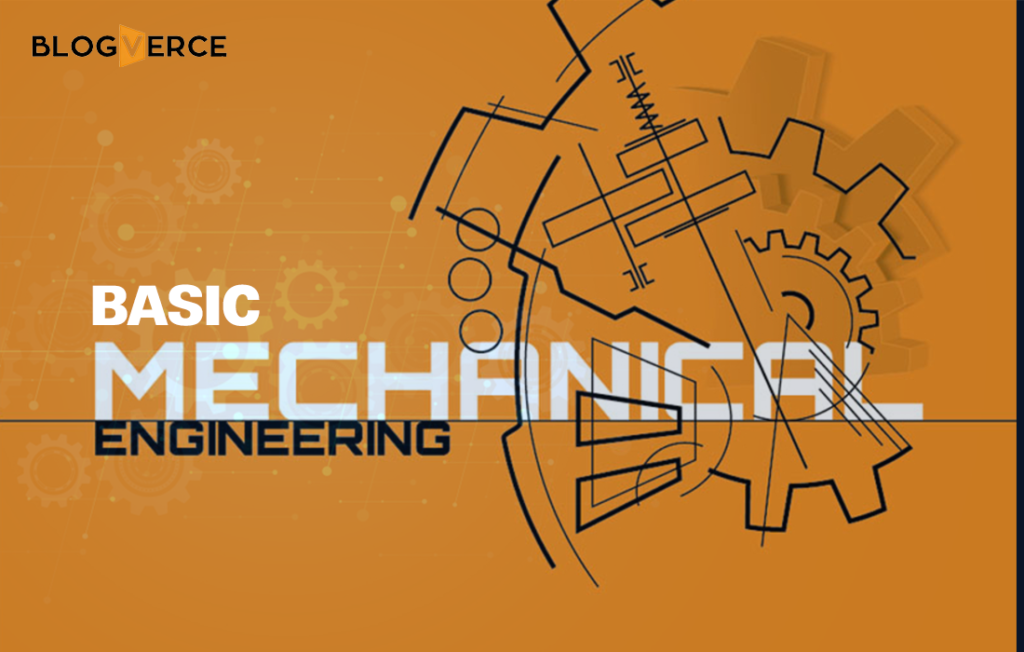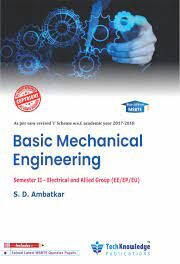
Introduction:
If you are an engineering student then you have a fear of basic mechanical engineering. But don’t worry about it now we give some tips for this subject and share some books to help you understand the subject. Here we discuss mostly GTU-related Basic mechanical engineering subjects.
Subject code & importance in GTU
Subject code: 3110006 (as per GTU)
Semester: 1 or 2
This is a theoretical subject. If you are good in English and understand and explain it very well then you are definitely a crack in this subject. In this subject, some topics like boilers, cycles, and many more are very important. If you need any help then you can contact us by our mail we definitely reply to it and solve your problem.
Reference books for Basic mechanical engineering:
Here we suggest some reference books for BME subjects that definitely help you to understand a subject well.
Best YouTube playlist:
Nowadays we need free and accurate knowledge so video references is a well good and accurate for this type of theoretical subject. But we can’t find a good and free course for BME. But don’t worry about it we provide some YouTube links that provide free and good learning which contain deep knowledge of BME subjects.
Important questions of BME:
Cochran boiler
The Cochran Boiler is a vertical, multi-tubular boiler equipped with numerous horizontal fire tubes. It offers significantly improved efficiency compared to a standard vertical boiler. It does so by extending the heating surface through multiple fire tubes. The efficiency of the Cochran Boiler ranges from 70% to 75%.

How Does a Cochran Boiler Work?
The first step that a Cochran boiler takes to work is the fuel inserted into the firebox and placed on the grate. The fuel is ignited through the fire hole installed at the right bottom of the boiler. So, the fuel is burnt in the firebox, and due to the burning of the fuel, smoke and hot flue gases come out. The flue pipes direct the hot flue gases into the combustion chamber.
From the combustion chamber, hot gases enter into the fire tubes. The fire tubes are surrounded by water. The hot gases inside the tubes transfer the heat from the hot gases to the water. Due to the exchange of heat, the temperature of the water starts increasing and it gets converted into steam. The steam produced rises upward and collects at the top of the boiler in the hemispherical dome. An anti-priming pipe is installed at the top of the boiler which separates the water from the steam and makes it dry steam. This dry steam is then transferred to the turbines through the steam stop valve.
The hot flue gases and smoke after rejecting heat, are directed to the smokebox. From the smokebox, the burnt gases and smoke is discharged into the atmosphere through the chimney.
A fusible plug is also provided at the top of the combustion chamber. When the temperature of the combustion chamber crosses the permissible level, the fusible plug melts, and the water through the combustion chamber enters the furnace of the boiler and stops the fire. In this way, a big fire accident can be prevented from taking place and also protects the boiler from damage.
advantages of Cochran Boiler:
- It is a quick and easy installation.
- Installation and Initial cost of Cochran boiler is low comparatively to other boilers.
- Coal or Oil type of fuel can be used.
- It is a portable (Easily move) type boiler.
- It has a high volume-to-area ratio.
Cochran Boiler Disadvantages:
- Steam generation is low due to vertical design and it is a major disadvantage.
- The pressure range is also limited.
- Maintenance is difficult.
Applications of Cochran Boiler
- Variety of process applications in industries
- Chemical processing divisions
- Pulp and Paper manufacturing plants
- Refining units
Babcock and Wilcox
Babcock and Wilcox Boiler is a horizontal type drum axis, stationary, high pressure, natural circulation, solid fuel-fired water tube boiler in which coal is burned to heat the water for changing the phase into steam and later that steam is used for power generation.

Babcock and Wilcox Boiler Working Principle:
The working is, first the fuel (coal) is placed at the grate, and water is supplied to the drum. Now from the fire door ‘fire’ is supplied, to start burning of coal. The start burning of coal produces hot gases.
Water from the long pipe as you can see in the diagram (down take a header) is coming and impurities parts get into the mud collector and water is moving to the tubes.
The temperature of the flue gases increases so water starts gets heating.
Here the baffle plate is placed to divert the flue gases direction to another side for an equal amount of flue gases for heating.
The water starts evaporating in the tube as increases the temperature.
The steam formed will go up by short pipes to the drum and to the superheater to form completely dry steam and during this process circulation of water is on. The smoke released by the damper to the chimney and to the atmosphere.
Advantages of Babcock and Wilcox Boiler
The following are the advantages of Babcock and Wilcox boiler:
- This boiler produces steam up to 2000 to 40000 kg/hr.
- It takes less space as compared to other boilers.
- Boiler tubes can be easily replaced.
- It is the only boiler that is used to produce a huge quantity of heat in power plants.
- In this boiler, the draught loss is low.
- It can be easily repaired and cleaned.
- High overall efficiency.
Disadvantages of Babcock and Wilcox Boiler
The following are the disadvantages of Babcock and Wilcox boiler:
- Large maintenance cost.
- It is not suitable for impure and sedimentary water. In the case of impure and sedimentary water, the scale may accumulate in the tubes and this causes the tubes to overheat and burst. The water treatment is necessary before feeding in a boiler.
- A continuous feedwater supply is needed to work. If continuous water is not supplied even for a short duration of time, in this case, the boiler is overheated. The water level must be strictly observed during the process of the Babcock and Wilcox boilers.
Applications of Babcock and Wilcox Boiler
- Power Generation:
The Babcock and Wilcox boiler finds extensive use in power plants for electricity generation. Its ability to generate large quantities of high-pressure steam makes it ideal for driving steam turbines, which convert the thermal energy of steam into mechanical energy to generate electricity.
- Industrial Processes:
Various industrial sectors benefit from the Babcock and Wilcox boiler’s capabilities. Industries such as chemical, petrochemical, textile, paper, and food processing rely on the boiler for processes requiring high-temperature steam. These applications include heat exchangers, steam-driven machinery, sterilization, and drying operations.
- Marine Applications:
The Babcock and Wilcox boiler has a significant presence in the marine industry. It provides steam power for propulsion systems in ships and vessels. The boiler’s ability to operate efficiently under high pressures and temperatures makes it suitable for marine environments where reliable and robust power generation is crucial.
- Heating and District Heating:
The Babcock and Wilcox boiler can also be used for heating purposes in residential, commercial, and industrial settings. It can provide hot water or steam for space heating, district heating networks, and other applications requiring centralized heating systems.
Conclusion:
In conclusion, we give all knowledge for learning purposes only if you have any query like this subject then contact us and research it and give the best solution of it which helpful for you and other students like you. If all information you like then share it with others to learn and educate.
FAQs





